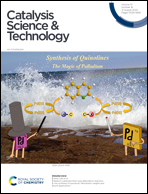Solar light harvest: modified d-block metals in photocatalysis
Abstract
With solar light, modified d-block metal photocatalysts are useful in areas where electricity is insufficient, with its chemical stability during the photocatalytic process, and its low-cost and nontoxicity. However, because of their large band gap for excitation, only biohazardous ultraviolet (UV) light irradiation can excite d-block metals, which limits its application in the living environment. Modified d-block metal photocatalyts such as TiO2, ZnO, has recently been the center of research in Nano studies due to the ability of these metals to convert pollutants into CO2 and H2O for environmental applications such as energy, environmental purification and wastewater treatment. This paper highlights the present improvements on the photocatalytic activity of modified d-block metals through their developing structure modification strategies, solar harvest, methods of synthesis and solar light synthesis catalytic mechanisms of these photocatalysts. In this report, the full knowledge of the use of the remarkable solar light harvest potentials vis-à-vis the excellent structure of these metals are revealed. Also, this study on modified d-block metal Nano-based photocatalysts is expected to enlighten scientists on precise management and evaluating the environment, which may merit prospect research into developing suitable mechanism for energy, wastewater treatment and environmental purification.



 Please wait while we load your content...
Please wait while we load your content...